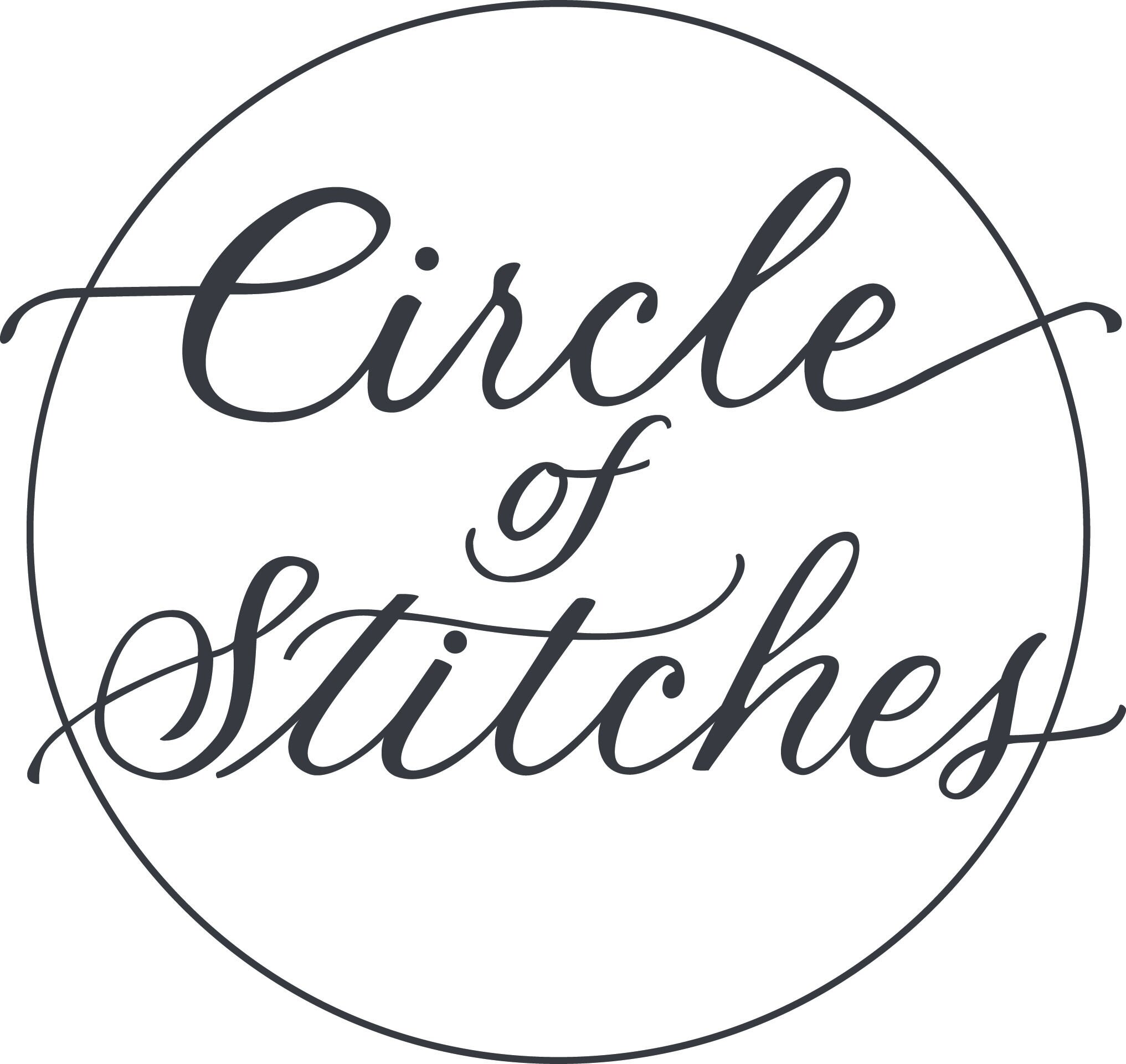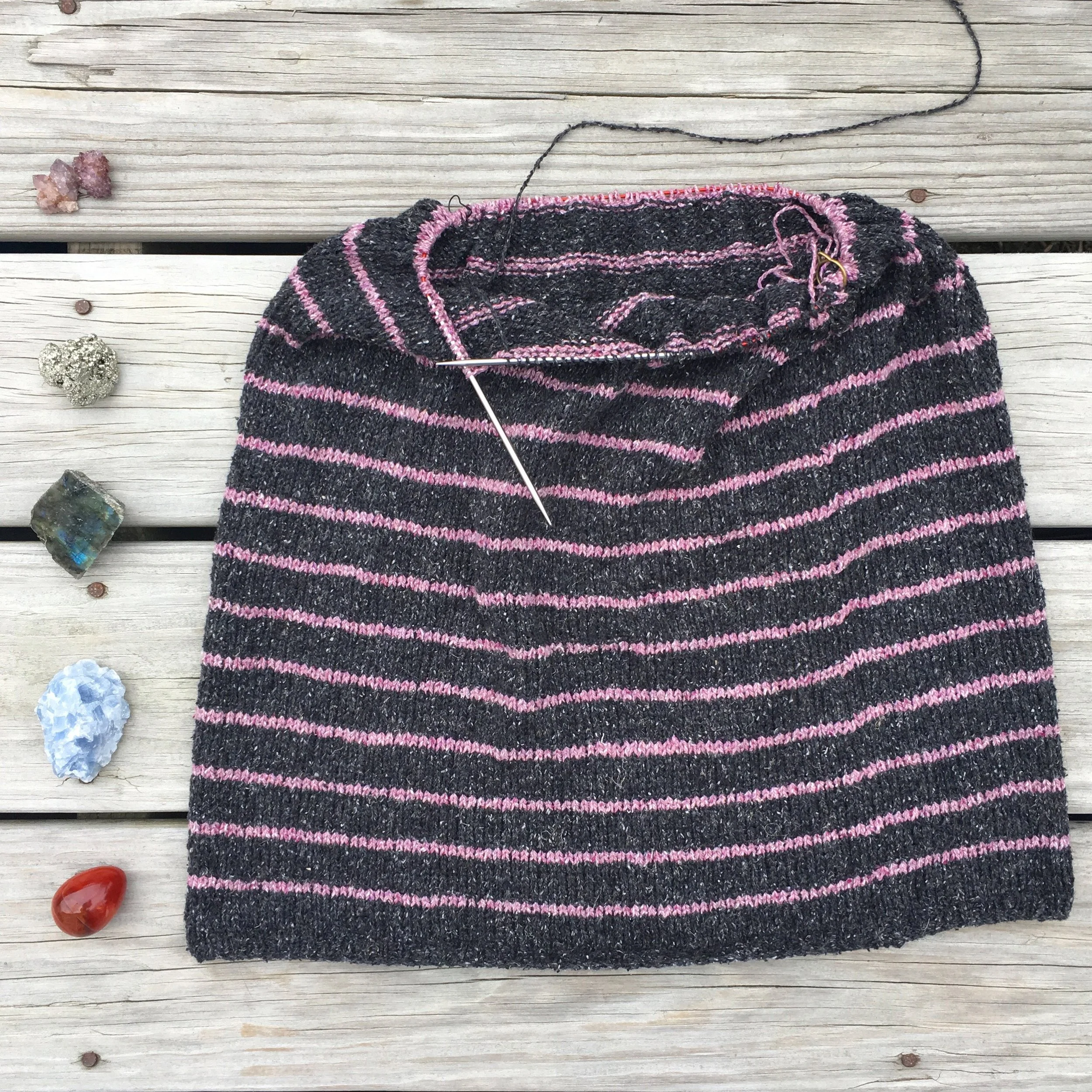You may know we carry a selection of independently-published tarot and oracle decks (and may even have taken our Intro to Tarot Workshop). We love working with independent artists, not only because we love supporting them but also because of the rich stories and imagery these artists incorporate. Today we are chatting with Wren McMurdo, designer of the gorgeous black-and-white Dark Days Tarot, and also a knitter!
Hi Wren, thank you for chatting with me! Could you tell me about the journey of learning to read the tarot and then eventually designing your own deck? What inspired you to start this project?
Hi Ana! It’s wonderful to speak with you. I love your shop! The combination of knitting and witchy arts is so perfect, and I love that your shop is set in Salem, MA, where there’s a strong magickal historical imprint. Glorious!
I spent six months studying Ashtanga yoga in India with Sri BNS Iyengar about ten years ago. Yoga and India inspired me to develop my spiritual practice, and it was there that I learned to meditate. Like, really meditate, where I felt I could leave my body if I wanted to. India is hugely into astrology, as well, so I kind of fell into the craft from an yogic angle. I discovered I was a witch via a dream I had there.
My then-partner gifted me an Osho Zen tarot deck when I returned home. As a queer artist, I was hugely inspired by those cards. They’re amazingly beautiful with plenty of rainbows and voluptuous characters. I thought, ‘What an amazing project it would be to design my own deck!’ It took me nine years to get to it, but I did.
What is the process of designing and then publishing your own deck?
My brand, Dark Days, started as a chocolate company. My idea was to create herbally-infused chocolates that help with PMS that would also showcase my work as an illustrator. They were a hit! However, I had discovered in the process that chocolate is not my favorite medium to work with, so I found a way to shift the brand to suit my desires.
I had already been creating Tarot-esque images for my social media account and having a blast with that process, so I decided to give it a go and design the whole deck. I designed them one by one, studying them thoroughly while fleshing out my meditation and witchcraft practice. I found my psychic abilities heightened by this practice, and I now consider myself a developed witch.
I had been sharing the cards with my Dark Days community via Instagram, receiving amazing support. A year later, I launched my Kickstarter campaign, and, with the help of so many amazing supporters within my community, published my deck! It was an incredible process in which I learned to be open to my desires as a path to success. That desire was to be a professional witch and artist, and here I am!
Your gorgeous deck is "inspired by the dark side of the moon." Could you tell us what this means, and how this informed the artwork for your deck?
When I was in high school, I didn’t get my period due to an eating disorder I’d developed. My therapist gave me the book Women’s Bodies Women’s Wisdom by Christiane Northrup, and I learned of the link between my mind, body, and the moon. My lack of periods led me to the moon! I discovered that all beings follow the phases of the moon, energetically, and I became particularly interested in the dark side of the moon, where “PMS” typically occurs. I believe premenstrual syndrome is a series of messages from your soul and body to your waking-life mind. A sour mood can alert you to a desire you’re not honoring, and heavy cramps can link to unhealed trauma or rampant stress, etc. The dark days of the lunar cycle offer the opportunity to grow in those tougher, harder-to-confront ways, and I think Tarot is also very good for this kind of growth. Therein lies the opportunity to find your truth via darkness.
What is the first tarot deck you ever owned? Mine was the Rider Waite, more than 20 years ago, and I've really enjoyed seeing to many female artists reinterpret and redesign this deck.
The Osho Zen I mentioned deck was my first deck, and it’s amazing. I recommend it to collectors everywhere. Though that deck isn’t traditional in the Rider-Waite sense, I used the Rider-Waite structure for my own because the cards are square, so I wanted to keep things somewhat consistent and a little easier for new readers.
The deck is square because I prefer to see things in cycles rather than black or white, upright or reversed. If one of my cards lands upright, it’s a full moon, manifested card. If it’s pointed left, it’s a waxing moon, building energy. If it’s tipped right, it’s waning, and if tipped upside down, it’s a new moon, a seed. I prefer this structure because it allows for a more independent interpretation, allowing more psychic/intuitive energy to flow through the reader. It also reminds the reader that “this too shall pass.”
What else would you like to share about yourself, your practice, and the Dark Days Tarot?
I believe that as a global community, we witches are being called by Earth and the cosmos to protect our planet, people of color, women, animals, etc. It is my hope that this deck will help us confront tougher issues on a more regular basis, enacting long-lasting and positive change through the craft, which is ultimate the craft of the self.
Yogis are taught to use their mats to practice being uncomfortable, and I see Tarot cards as serving a similar function, in that they are little yoga mats for building character. The more comfortable you can get with being uncomfortable, the more power you’re able to wield in a world that’s filled with undeniable problems and violations against life.
Now, we do need to talk a little about knitting! How long have you been knitting and can you show us something you're working on?
Oh, gosh, I love knitting! I’ve knit since high school, so...over fifteen years of knitting! It helped me heal my eating disorder, actually! I even went to fashion design school because of my love of knitting that eventually led me to get into machine knitting. My entrepreneurial spirit has a hard time just sitting and enjoying something for the fun of it, so of course I had to go and turn knitting into a career! I detoured away from fashion when I moved to Seattle with my wife, turning to chocolate, and finally Tarot, which is sticking, hard. Illustration and witchcraft were always constants through each of these phases.
I have been working on a bra top, lately, which I’m knitting freehand out of cotton sock yarn I found in a little shop on Orcas Island, WA. It is intended to be part of a bra and shorts set for hitting the rocky beaches of Seattle.
What is your favorite item to knit? I love making sweaters and socks myself.
I don’t have a favorite thing to knit. It’s all about creation, for me, so it depends on what I want to wear or make for myself at the time. The first thing that comes to mind is this beautiful poncho that I made using a pattern I found in my old copy of Stitch ‘n’ Bitch by Debbie Stoller, one of my feminist idols.
Do you have any favorite patterns you'd like to share?
I've actually stopped using patterns and now just design my own little patterns on the fly. When I finish designing this bra top set, I’ll send along a pattern so y’all can enjoy it!


















